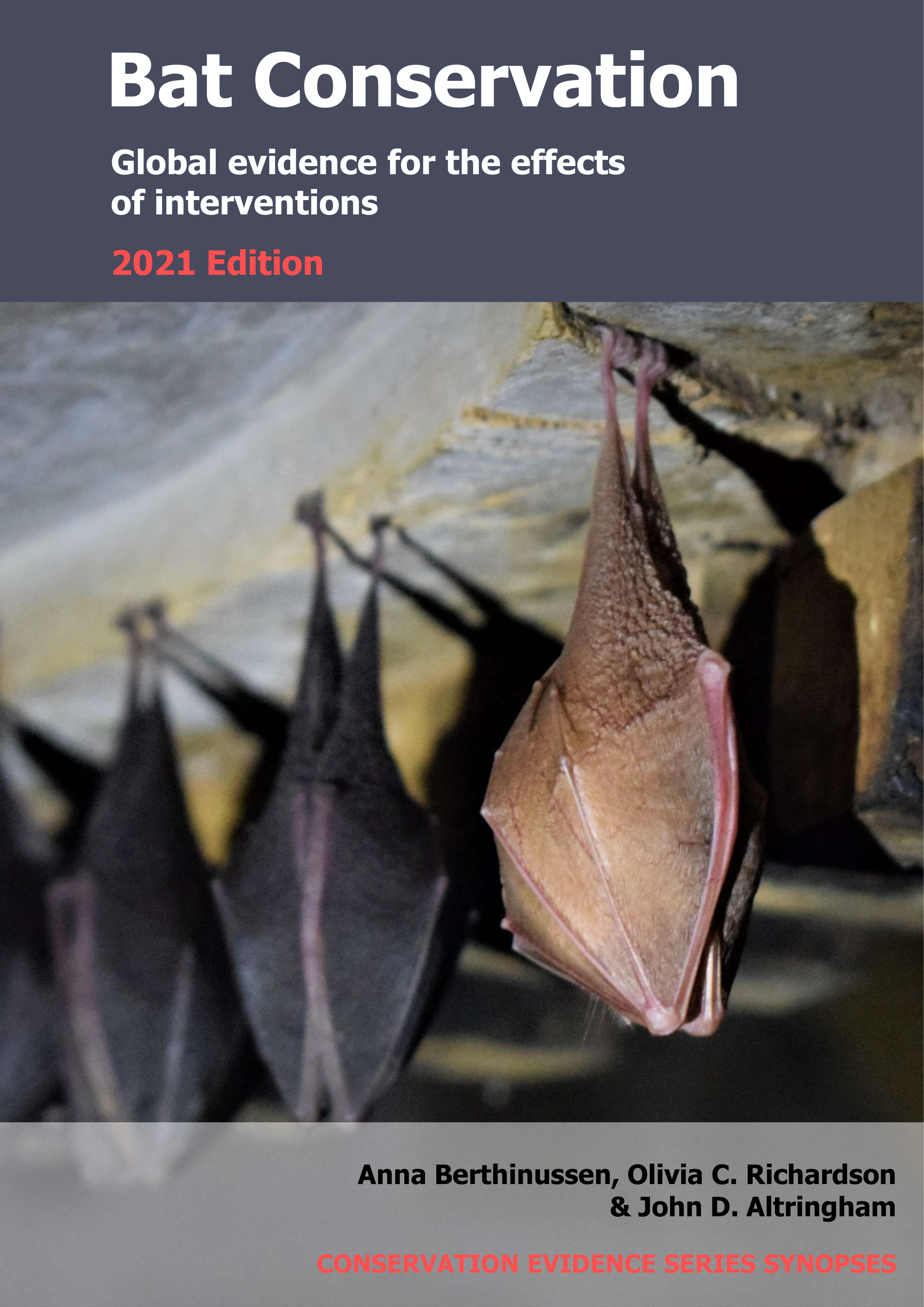Create tree plantations on agricultural land
-
Overall effectiveness category Unknown effectiveness (limited evidence)
-
Number of studies: 3
View assessment score
Hide assessment score
How is the evidence assessed?
-
Effectiveness
30% -
Certainty
30% -
Harms
0%
Study locations
Supporting evidence from individual studies
A replicated, site comparison study in 1999 of four agricultural sites planted with native bluegum Eucalyptus globulus in Western Australia (Hobbs et al 2003) found that tree plantations next to remnant vegetation had higher overall bat activity than isolated plantations or agricultural grazing land, but the number of bat species was similar. More bat passes were recorded in plantations next to remnant vegetation (52 bat passes) than in plantations isolated from remnant vegetation (4 bat passes) or over agricultural grazing land (14 bat passes), although no statistical tests were carried out. Bat activity was highest in remnants of original vegetation (75 bat passes). Similar numbers of bat species (2–4) were recorded in plantations and grazing land. Eight bat species were recorded in total (see original paper for data for individual species). All four sites had farm forestry plantations (4–6 years old), remnants of original native vegetation, and open grazing land. At each of four sites, one location within each of four habitats (plantations next to remnants, isolated plantations, grazing land, and remnant vegetation) was sampled with a bat detector for one full night in October 1999.
Study and other actions testedA replicated, site comparison study in 2002 of 120 sites in an agricultural area in New South Wales and Victoria, Australia (Law & Chidel 2006) found that sites planted with native eucalypt trees had similar overall bat activity and a similar number of bat species as treeless grazed paddocks. Bat activity and the number of bat species did not differ significantly between plantations (average 87 bat passes/night, 5–7 species) and treeless grazed paddocks (50 bat passes/night, 5 species). Bat activity was lower in plantations than in remnants of original forest (302 bat passes/night), but the number of bat species was similar (7 species in remnants). Eleven bat species were recorded in total (see original paper for data for individual species). Grazing land with small remnants of forest had been planted with native tree species from the mid-1970s to 1991. Twelve treatments were sampled including different shapes or sizes (narrow, small, medium, large, very large) and ages (<10 or >10 years old) of plantations and remnant forest, and grazed paddocks with and without trees. For each of 12 treatments, 10 points were sampled with bat detectors for one full night in November–December 2002.
Study and other actions testedA replicated, site comparison study in 2006–2007 at 14 farms in New South Wales, Australia (Law et al 2011) found that tree plantations on agricultural land had similar bat activity and species richness as treeless paddocks, and lower bat activity, species richness and numbers of roosts than remnant native woodlands. Bat activity and the number of bat species recorded was similar between plantations (87 bat passes/night, 6–8 species) and paddocks (40 passes/night, 7 species), but higher in remnant woodland (650 bat passes/night, 10 species), although no statistical tests were carried out. Species composition was also similar in plantations and paddocks but differed in remnant woodland (data reported as statistical model results). Twenty-eight bat roosts were identified in remnant trees, but none in plantations. Twelve bat species were recorded in total (see original paper for data for individual species). Forty-four sites were surveyed across 14 farms (11 in remnant woodland, 27 in plantations, six in treeless paddocks). Plantations (2–40 ha) consisted of 1–4 Eucalyptus spp. and were 4–5 or 10 years old. Each of 44 sites was surveyed for two consecutive nights/site in September 2006 and February 2007. Ten bats were caught in harp traps and radio-tracked in late summer and spring 2008 at three farms.
Study and other actions tested
Where has this evidence come from?
List of journals searched by synopsis
All the journals searched for all synopses
This Action forms part of the Action Synopsis:
Bat Conservation
Bat Conservation - Published 2021
Update 2020





)_2023.JPG)














